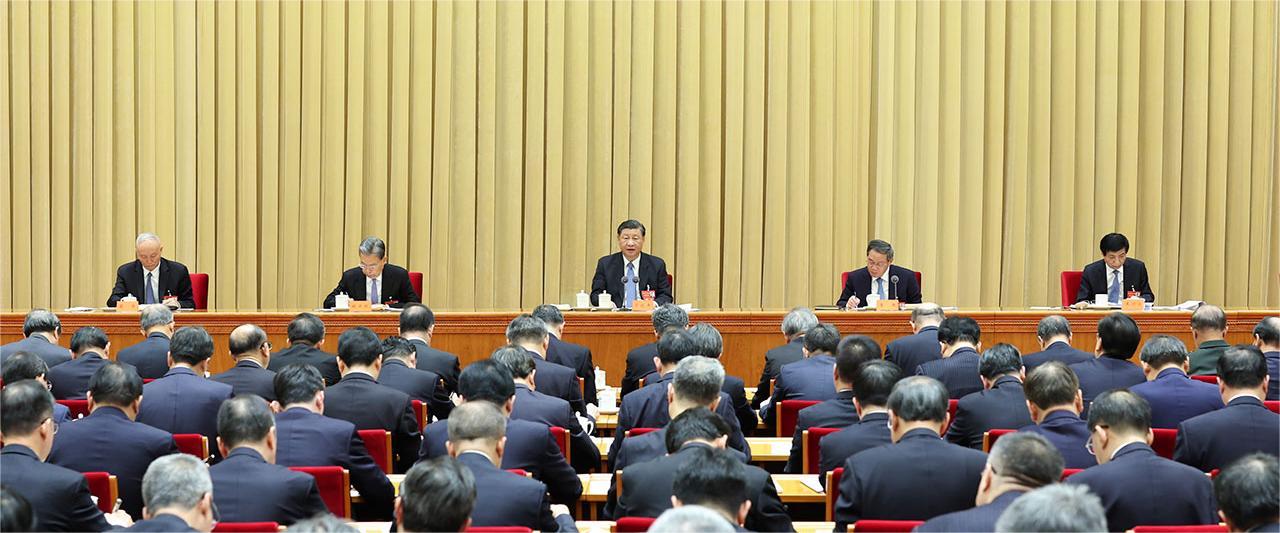How China Plans to Attract Foreign Investors in 2024?

Consistency in macroeconomic policy orientation and identifying the development center and direction
This year, China’s contribution to global economic growth is expected to reach one-third. it is still the largest engine of global growth. The Chinese economy has strong resilience and ample potential. Its long-term fundamentals remain positive. Recently, the IMF and Standard & Poor’s have successively raised their growth forecasts for the Chinese economy in 2023 to 5.4% and in 2024 to 4.6%, indicating that international institutions still have confidence in the Chinese economy. However, while there have been improvements in China’s economic growth expectations, it still faces challenges.
Macroeconomic policies have always been a top priority of the Central Economic Work Conference. This year’s conference put forward “five musts” and particularly emphasized that “Promoting Chinese modernization must be upheld as the foremost politics.” Promoting China’s modernization requires precise and rational macroeconomic policies and a systematic understanding of economic work. The conference specifically pointed out the need to “strengthen counter-cyclical and cross-cyclical adjustments of macroeconomic policies, continue to implement proactive fiscal policies and prudent monetary policies, and enhance policy innovation and coordination.” In this conference, fiscal policy and monetary policy are separately addressed, highlighting the central government’s emphasis on these two major macroeconomic policies.
Regarding fiscal policy, it emphasizes the need to improve quality and efficiency. Local government special bonds can be moderately expanded, but new bonds can only be used to digest existing stock and support the development of the real economy. The focus of tax cuts and fee reductions is to support technological innovation and the development of the manufacturing industry. In addition to revenue generation and expenditure reduction, it specifically mentions that “Party and government departments should get used to working within a limited budget,” which is a clear reminder to governments at all levels not to rely on issuing new bonds for image projects or indirectly increasing benefits for civil servants.
In terms of monetary policy, it once again emphasizes the need to effectively utilize both the overall quantity and structural functions of monetary policy tools. This means comprehensively using quantitative and structural monetary policy tools: not simply relying on unreasonable liquidity but being “flexible, moderate, precise, and effective”. In terms of structure, it specifically mentions several aspects, including technological innovation, green transformation, small and micro enterprises, and the digital economy. which are also key directions for the future development of the Chinese economy.
In terms of non-economic policies, there is a special mention of “boost publicity concerning the economic situation and guide public opinion in this regard to boost confidence in the bright prospects of China’s economy.” The concept of the “bright prospects” of the Chinese economy has not been mentioned in previous central policies. This concept is used to counter a series of negative views about China’s economy, such as the collapse of the Chinese economy prospects the peak of China’s rise prospects, and the failure of major projects prospects. In future economic work, it is not enough to just manage expectations. The people have aspirations and expectations for a better life, so efforts must be made to increase disposable income for residents, encourage consumption, and reverse the phenomenon of “weak social expectations.”
Expanding opening up is a “required course” for economic recovery
The Central Economic Work Conference emphasizes the need to “high-level opening up will be expanded,” “in alignment with high-standard international economic and trade rules,” “foster a world-class business environment that is market-oriented, law-based, and internationalized,” and promote the brand of “Invest in China.” It can be seen that in the international geopolitical context of the anti-globalization trend, opening up remains China’s distinct choice. It reiterates that China’s openness is clear, effectively boosting foreign investment confidence and maintaining the foundation of foreign capital. Since the beginning of this year, attracting foreign investment in our country has been challenging, with a year-on-year decline of 8.4% in the actual use of foreign investment in the first three quarters. Reversing this situation and actively attracting and utilizing foreign investment will effectively support steady progress and drive growth in our economy. Regarding the issue of the business environment, which foreign-funded enterprises have been concerned about recently, this conference also responded strongly with market-oriented, law-based, and internationalized.
The conference also emphasizes that “Barriers shall be removed to make it easy for foreigners to do business, study and travel in China” In recent years, due to factors such as the pandemic, many people have felt a decline in the number of foreign tourists visiting China, fewer foreign young people studying in China, and a decrease in foreign businessmen in China. Data shows that in the first half of this year, the number of inbound travelers to Beijing and Shanghai only recovered to one-tenth of the pre-pandemic level. The number of American students studying in China during the pandemic also dropped to the lowest level in more than twenty years, with only a few hundred remaining at one point. However, China’s development cannot be separated from the world, and the world’s development also relies on China. The lockdown caused by the pandemic has brought many adverse effects, and removing these effects is a necessary course for us to get rid of the after-effects of the pandemic. We can see that a series of practical measures to open up, such as the unilateral visa waiver policies being implemented with countries like France and Germany, have been introduced one after another.
Allowing foreign nationals to come in and enabling us to go out will contribute to mutual understanding between China and the world, improve international market expectations for China, and promote economic stability and growth. With increased personnel and economic exchanges and improvements, the idea of decoupling will naturally be debunked.
Without an increase in residents’ income, there will be no healthy economic cycle
The Central Economic Work Conference in 2023 emphasized the need to “increase the income of urban and rural residents, expand the size of the middle-income group, and improve consumption environment.” This is in line with the proposal in the report of the 20th National Congress of the Communist Party of China to “work to raise the share of personal income in the distribution of national income and give more weight to work remuneration in primary distribution.” This requires China to intensify research and introduce more specific and effective measures to increase residents’ income.
Normally, we tend to focus more on the improvement of the supply side of goods and services. There is a simple understanding that as long as the supply capacity increases, residents’ income and consumption will increase. However, looking at historical experiences from various countries, the improvement of supply capacity does not necessarily lead to an increase in residents’ income and consumption. For example, in the decade before the 1929 economic crisis, global productivity had greatly improved, but a global economic crisis still broke out. In the past few decades, the living conditions of industrial workers in the United States have not significantly improved, and it is difficult to argue that the supply capacity of technology, goods, and services in the United States has not increased or developed.
The household sector is the most important consumer sector in an economy, and without residents consuming products, the economic cycle will not be smooth. Currently, the consumption level of the household sector in China is relatively low compared to its production capacity. According to World Bank data, in 2021, China’s household consumption accounted for only 12.8% of the world, while China’s GDP accounted for 17.9% of the world in nominal terms and 18.5% of the world in PPP terms. China’s industrial production capacity accounted for 30% of the world based on value-added calculation, and even higher based on output calculation. However, this is not entirely because the household sector is reluctant to consume, but rather because there is genuinely no capacity to expand consumption. If we compare the total annual consumption expenditure and interest expenditure of the household sector with its income, it can be seen that currently, the household sector in China finds it difficult to have a surplus. Therefore, there is no income basis for further large-scale expansion of consumption.
Improving residents’ income cannot be rushed. In the past few years, China has achieved remarkable improvement in residents’ income through comprehensive poverty alleviation, which has made great achievements. In the current context of relative overcapacity in some industries in China, in addition to measures such as raising the minimum guarantee and distributing consumption vouchers, it is also possible to actively study the relationship between currency issuance and increasing residents’ income and comprehensively consider adjustments.





